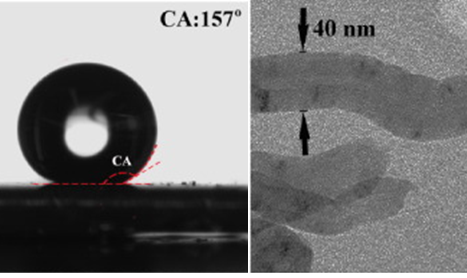The composite film of carbon nanotubes and silicon carbide nanowires was synthesized directly on the silicon substrate by the catalyst-assisted method. The carbon nanotubes crimped together decorated with silicon carbide nanowires covering the whole substrate. The appropriate amount of aluminum powders is a crucial factor to achieve the composite film. The composite film exhibited excellent intrinsic superhydrophobicity without any further functionalization. By using the nano/micropillar composite structure model, the presence of silicon carbide nanowires is found to be the key factor that results in the superhydrophobicity of the films. The feasible synthesis of the superhydrophobic coating could have potential application in water-repelling devices, like biochemical sensors and microfluidic systems.

The composite film of carbon nanotubes and silicon carbide nanowires was synthesized directly on the silicon substrate by the catalyst-assisted method. The carbon nanotubes crimped together decorated with silicon carbide nanowires covering the whole substrate. The appropriate amount of aluminum powders is a crucial factor to achieve the composite film. The composite film exhibited excellent intrinsic superhydrophobicity without any further functionalization. By using the nano/micropillar composite structure model, the presence of silicon carbide nanowires is found to be the key factor that results in the superhydrophobicity of the films. The feasible synthesis of the superhydrophobic coating could have potential application in water-repelling devices, like biochemical sensors and microfluidic systems.
